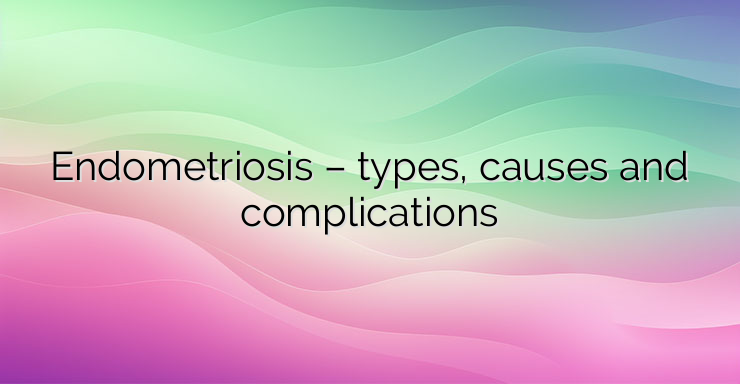One reason that is thought to lead to the development of endometriosis is the retrograde flow of menstrual blood through the fallopian tubes to the peritoneal cavity. It has been found that 80% of women experience retrograde menstrual flow, but only a few develop endometriosis. This also highlights the possibility of the presence of other factors that contribute to the survival and implantation of endometrial cells in the peritoneal cavity. Nesting of these cells in the peritoneum is due to disruption of local mechanisms that prevent adhesion. This leads to increased production of cytokines, including interleukin and tumor necrosis factor alpha. Some studies have shown an increased incidence of certain immune diseases along with endometriosis. Such are rheumatoid arthritis or hypothyroidism. Other hypotheses are aimed at the possibility of the development of endometriosis under the influence of hormonal factors. In these processes, the presence of cells capable of differentiating into endometrial cells is assumed. Endometriosis is considered a chronic inflammatory disease that is associated with multiple immune processes. Disturbances in the functions of the immune system accompany every stage of the development of the disease. The formation of new blood vessels is of key importance for the development of ectopic endometrial localizations, especially in the peritoneum. The new formation of these structures is combined with the provision of innervation in the endometrial tissue, which explains the presence of pain in the affected patients. Several types of endometriosis are classified: Ovarian endometriosis – seen as superficial lesions and endometrial cysts; Peritoneal endometriosis – observed in various forms, characterized by rich blood supply and petechiae; Deep infiltrative endometriosis. Peritoneal endometriosis can manifest as intraperitoneal and subperitoneal forms. Ovarian endometriosis occurs in 2-10% of women of reproductive age and in 50% of patients receiving infertility treatment. Reproductive disorders are a frequent complication in patients with endometriosis. This is due to anatomical changes in the pelvis, adhesions, violation of the integrity of the fallopian tubes and inflammatory processes in the small pelvis. In addition, disorders in the functions of the immune system lead to changes in the hormonal balance, which affects the quality of the eggs and prevents the implantation of the fertilized egg. Most cases are diagnosed in the period between the onset of menstruation and the onset of menopause. Most often, the disease is diagnosed between the ages of 25-45. References: https://www.ncbi.nlm.nih.gov/pmc/articles/PMC8508982/


Leave a Reply